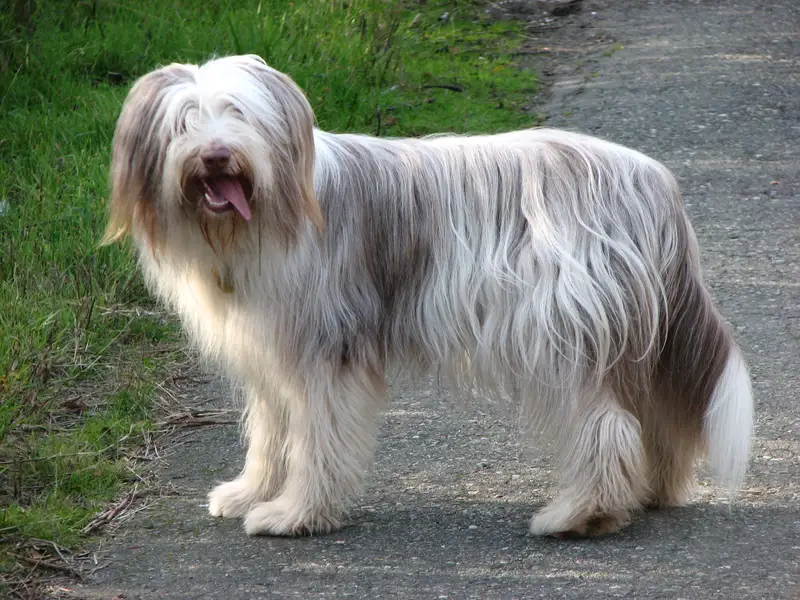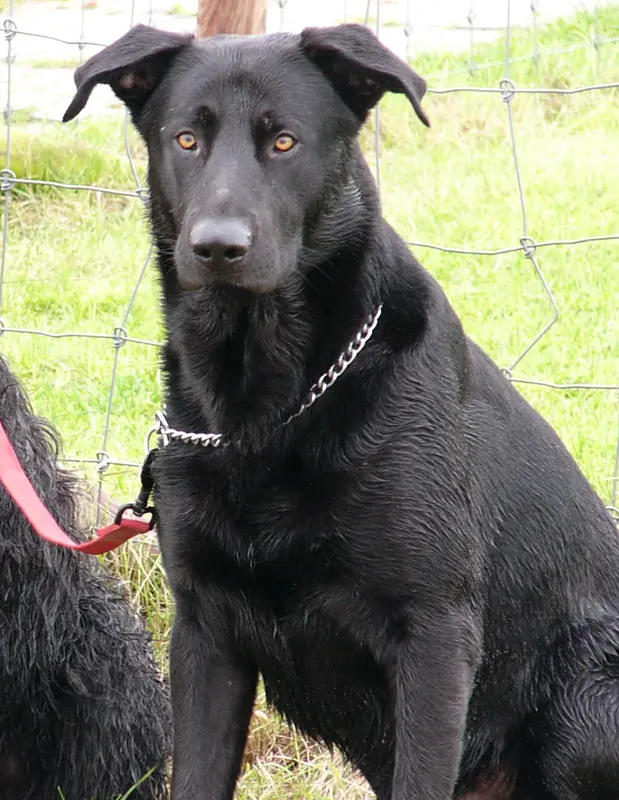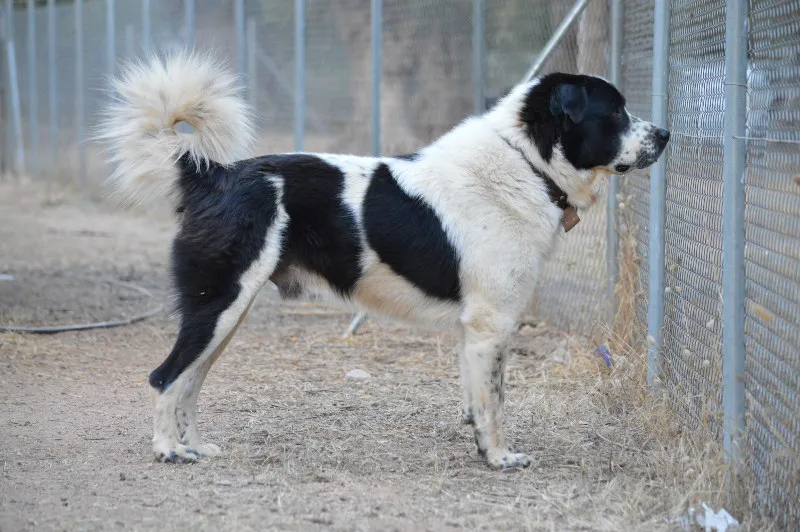Puli
The Puli is a medium-sized Hungarian herding dog known for its distinctive corded coat and agile nature. Intelligent and protective, it thrives on exercise and training.
Overview
🐕Breed Overview
✨Key Traits
💡What Makes Puli Special
Pulis are characterized by their unique corded coat, which provides insulation and protection from the elements. They are agile and quick, able to navigate challenging terrains with ease.
Their herding instincts are strong, and they often display natural abilities to manage livestock, even without formal training. Pulis are known for their loyalty and protective nature, making them excellent family guardians.
Their intelligence allows them to learn quickly, but they can also be independent and stubborn, requiring a firm and consistent training approach. Overall, the Puli is a versatile breed that excels in various roles, from herding to companionship.
The Puli is a unique and captivating breed known for its distinctive corded coat and robust, agile physique. Originating from Hungary, this medium-sized herding dog has been a vital part of shepherding culture for over a thousand years. With a height ranging from 16 to 17 inches and a weight of 25 to 35 pounds, the Puli is well-proportioned and muscular, designed for agility and endurance.
Its coat, which can be black, white, gray, or cream, forms natural cords that provide insulation and protection against the elements. The Puli's intelligence and strong work ethic make it an excellent herding dog, but it also excels as a loyal companion and guardian. Known for its playful and affectionate nature, the Puli forms strong bonds with its family and is particularly good with children.
However, it can be wary of strangers and may exhibit protective behaviors. Training is essential for this breed, as it can be independent and stubborn if not properly guided. Regular exercise is crucial to keep the Puli happy and healthy, as they thrive on physical activity and mental challenges.
With the right care and attention, the Puli can be a delightful addition to any active household, offering companionship, protection, and a touch of Hungarian heritage.
🎉Fun Facts
Pulis are known for their agility and can change directions quickly, making them excellent herding dogs.
Pulis have been used as police dogs in some regions due to their intelligence and protective nature.
The breed is often referred to as a 'mop on springs' due to its distinctive corded coat and lively demeanor.
The Puli's coat can take years to fully cord and requires regular grooming to maintain its unique appearance.
Breed Characteristics
Family & Friends
Good Behavior
Get Up & Go
Household Harmony
Temperament & Personality
✨Key Traits
🐕Core Temperament
The Puli is a lively and affectionate breed, known for its intelligence and strong work ethic. They are naturally protective of their families and can be wary of strangers, making them excellent watchdogs.
While they are friendly and playful with their loved ones, they may exhibit territorial behaviors if not properly socialized. Pulis are energetic and require regular exercise to stay happy and healthy.
Their independent nature can lead to stubbornness, so consistent training and positive reinforcement are essential. Overall, the Puli's temperament is characterized by loyalty, agility, and a strong desire to work alongside their owners.
💫Personality Profile
The Puli is an intelligent and active breed, known for its playful and affectionate nature. They are highly social dogs that thrive on interaction with their families, often forming strong bonds with their owners.
While they are friendly and loving towards children, they can be wary of strangers, making them excellent watchdogs. Pulis are known for their agility and quickness, often displaying a playful, puppy-like demeanor throughout their lives.
Their independent streak can make training a challenge, but with consistent and positive reinforcement, they can excel in obedience and agility training. They require regular exercise to channel their energy and prevent boredom, which can lead to mischievous behavior if not adequately stimulated.
🔊Vocal Tendencies
The Puli is known for its vocal nature, often barking to alert its owners of any perceived threats or changes in the environment. They may bark when playing, greeting family members, or when feeling protective of their territory.
While their barking can be excessive at times, it is typically a reflection of their alertness and protective instincts. Proper training and socialization can help manage their barking tendencies, ensuring they are well-adjusted and less prone to unnecessary vocalizations.
Affection & Social Traits
Energy & Activity
Communication Style
Care Requirements
🏃♂️Exercise Requirements
Daily Exercise
The Puli is an active and energetic breed that requires a significant amount of exercise to maintain its physical and mental well-being. Ideally, an adult Puli should engage in at least 60 to 90 minutes of vigorous exercise daily. This can include activities such as running, hiking, biking, and engaging in herding trials or agility training.
Puppies require shorter bursts of activity, around 30 to 60 minutes, broken into multiple sessions throughout the day to prevent overexertion. Adult dogs benefit from a mix of high-intensity activities and moderate exercise to keep them stimulated and healthy. Regular exercise helps manage their weight, supports cardiovascular health, and reduces the likelihood of behavioral issues stemming from pent-up energy.
Insufficient exercise can lead to restlessness, destructive behavior, and anxiety, making it crucial for owners to provide ample opportunities for physical activity.
Preferred Activities
🏠Living & Adaptability
Space Requirements
The Puli thrives in environments where it has ample space to roam and play. While they can adapt to apartment living if given enough exercise, they are best suited for homes with a large yard or access to open spaces.
The breed's strong herding instincts and high energy levels mean they need room to run and explore. Owners in smaller living situations should ensure they can provide daily outdoor activities and mental stimulation to prevent boredom and behavioral issues.
Without sufficient space, Pulik may exhibit destructive tendencies or develop anxiety, so it's essential to create a stimulating environment for them.
Climate Preference
🍲Feeding Guide
Schedule
Food Types
Portion Size
Special Nutritional Needs
Pulis may have specific dietary needs based on their activity level and age. High-quality protein is essential for maintaining muscle mass and energy levels.
Owners should monitor for any food sensitivities, particularly to grains, and consider grain-free options if necessary. Regular veterinary check-ups can help identify any nutritional deficiencies or health concerns.
✨Grooming Requirements
Grooming Overview
The Puli's coat requires significant grooming to maintain its unique corded texture and overall health. Owners should regularly separate the cords to prevent matting and keep the coat clean.
Bathing should be done as needed, but it can take a full day for the coat to dry completely due to its thickness. For those who prefer a lower-maintenance option, the coat can be trimmed short, but this will alter its distinctive appearance.
Regular brushing is essential to remove debris and dirt, especially if the coat is brushed out rather than corded. Grooming sessions should be frequent, ideally every few weeks, to ensure the coat remains healthy and manageable.
Care Schedule
Brush or cord the coat every 1-2 weeks; bathe as needed, which may be infrequent but requires significant drying time.
Health Profile
⚕️Health Care
Regular health care is vital for the Puli's lifespan, including routine veterinary check-ups, vaccinations, and preventive treatments. Early detection of health issues can lead to more effective management and treatment options.
Owners should also prioritize dental care, as oral health can significantly impact overall well-being. Maintaining a consistent health care routine throughout the Puli's life stages, from puppyhood to senior years, is essential for promoting longevity and quality of life.
Health Issues Overview
⏳Average Lifespan
Genetic Factors
Genetics play a crucial role in the Puli's lifespan, with hereditary health issues potentially affecting their longevity. Responsible breeding practices that prioritize genetic diversity can help reduce the risk of inherited conditions.
Prospective owners should seek reputable breeders who conduct health testing and provide transparency about the breed's genetic history. Understanding the potential hereditary health issues can guide owners in making informed decisions and taking preventive measures to ensure their Puli remains healthy throughout its life.
Living Conditions
The Puli's lifespan can be influenced by various environmental factors, including housing conditions, climate, and social interactions. A Puli kept in a spacious, active environment with regular exercise and mental stimulation is likely to live a longer, healthier life.
Exposure to harsh weather conditions can impact their health, so providing shelter and protection from extreme temperatures is essential. Social interactions with family members and other pets can also contribute to their overall well-being, as Pulik thrive on companionship and engagement.
Ensuring a balanced lifestyle with proper nutrition, exercise, and socialization can significantly enhance the Puli's quality of life and longevity.
🏥Common Health Issues
Hip Dysplasia
Warning Signs
🔬Diagnosis
Veterinarians typically diagnose hip dysplasia through physical examinations and X-rays.
💊Treatment
Medications, weight management, and in severe cases, surgical intervention.
📝Management Tips
Maintain a healthy weight, provide joint supplements, and engage in low-impact exercise to support joint health.
Progressive Retinal Atrophy (PRA)
Warning Signs
🔬Diagnosis
Diagnosis is made through veterinary eye examinations and genetic testing.
💊Treatment
Currently, there is no cure; supportive care is recommended.
📝Management Tips
Regular veterinary check-ups and monitoring for vision changes.
Patellar Luxation
Warning Signs
🔬Diagnosis
Diagnosis is made through physical examination and imaging techniques.
💊Treatment
Surgical correction may be required in severe cases.
📝Management Tips
Weight management and physical therapy can help; surgical options may be necessary in severe cases.
🛡️Preventive Care
🔬Hip Evaluation
Hip Evaluation assesses the hip joints for dysplasia and other abnormalities, crucial for preventing joint issues.
📅 Annually after 2 years of age.
🔬Eye Examination
Eye Examination checks for hereditary eye conditions, including PRA, ensuring early detection and management.
📅 Every 1-2 years, or as recommended by a veterinarian.
🔬Knee Evaluation
Knee Evaluation assesses the patellar luxation risk, important for maintaining joint health.
📅 Annually after 2 years of age.
Training
🧠Intelligence & Trainability
💪Work Drive
The Puli has a strong work drive, stemming from its history as a herding dog. This breed thrives when given tasks to perform, whether it's herding livestock, participating in agility competitions, or engaging in obedience training.
Providing the Puli with a job helps fulfill its natural instincts and keeps it mentally stimulated. Activities such as herding trials, agility courses, and interactive games are excellent ways to engage the Puli's mind and body.
Without sufficient mental and physical stimulation, the Puli may become bored and exhibit undesirable behaviors, making it essential for owners to provide regular opportunities for work and play.
⚠️Training Considerations
Pulis can exhibit behavioral challenges, particularly if they do not receive adequate training and socialization from a young age. Their independent and strong-willed nature can make them stubborn, leading to difficulties in obedience training.
Additionally, their protective instincts may result in aggression towards unfamiliar dogs or strangers if not properly managed. To overcome these challenges, early socialization is crucial, exposing the Puli to various environments, people, and other animals.
Consistent and positive reinforcement training methods are recommended to encourage good behavior and establish a strong bond between the dog and its owner. Engaging the Puli in mental stimulation activities, such as puzzle toys or obedience training, can also help channel their energy and intelligence effectively.
📝Training Tips
Training a Puli requires patience and consistency, as they are intelligent but can be headstrong. Start training early, focusing on basic commands and socialization. Use positive reinforcement techniques, such as treats and praise, to motivate the dog.
Incorporate fun and engaging activities into training sessions to keep the Puli interested. Consistency is key; establish a routine and stick to it. Consider enrolling in obedience classes or working with a professional trainer familiar with the breed to address any specific challenges.
Regular training not only helps with obedience but also strengthens the bond between the dog and its owner, making the Puli a well-rounded companion.
History & Heritage
📜Origin Story
The Puli's origins are steeped in the history of the Magyar tribes, who migrated to Hungary over a thousand years ago. These tribes brought with them various breeds of herding dogs, which were essential for managing their flocks in the vast plains of Hungary.
The Puli was specifically bred for its agility, intelligence, and distinctive corded coat, which provided protection against harsh weather conditions. As the breed evolved, it became known for its exceptional herding abilities, often working alongside the larger Komondor to guard livestock from predators.
The Puli's unique appearance and skills have made it a cherished part of Hungarian culture, symbolizing the country's rich pastoral heritage. Despite facing challenges in the 20th century, including a decline in traditional shepherding practices, dedicated enthusiasts have worked to preserve the breed, ensuring its place in modern society as both a working dog and a beloved companion.
⏳Development History
The Puli's development can be traced back over a thousand years to the migration of the Magyar tribes from Central Asia to the Carpathian Basin. These early shepherds brought with them various herding dogs, which eventually led to the formation of the Puli breed.
The Puli was primarily used for herding sheep and guarding livestock, working alongside larger breeds like the Komondor. Throughout the centuries, the breed has undergone changes in appearance and function, adapting to the evolving needs of shepherds.
The first breed standard was established in the early 20th century, and efforts to preserve the breed intensified after World War II when its popularity declined. Today, the Puli is recognized for its unique corded coat and remains a valued herding and companion dog.
🛡️Purpose & Historical Role
Historically, the Puli was bred for herding sheep and guarding livestock. Its agility and intelligence made it an excellent herder, capable of managing flocks with ease.
The breed's unique corded coat not only provided insulation but also protected it from the elements while working outdoors. In addition to herding, the Puli has also served as a loyal guardian of homes and properties, showcasing its versatility as a working dog.
Today, while its primary role has shifted towards companionship and family protection, the Puli still retains its herding instincts and is often seen participating in herding trials and competitions.
🏺Cultural Significance
The Puli has a rich history in Hungary, where it has been an integral part of the shepherding culture for over a thousand years. This breed is not only valued for its herding abilities but also holds a special place in Hungarian folklore and tradition.
The Puli's unique appearance and skills have made it a symbol of Hungarian heritage, often depicted in art and literature. In modern times, the breed has gained recognition beyond Hungary, becoming a beloved companion and guardian in various countries, including the United States.
The Puli's presence in popular culture, such as being featured in music and literature, further highlights its significance as a cultural icon.
Conservation Status
This breed is rare and not commonly found outside its region of origin.









